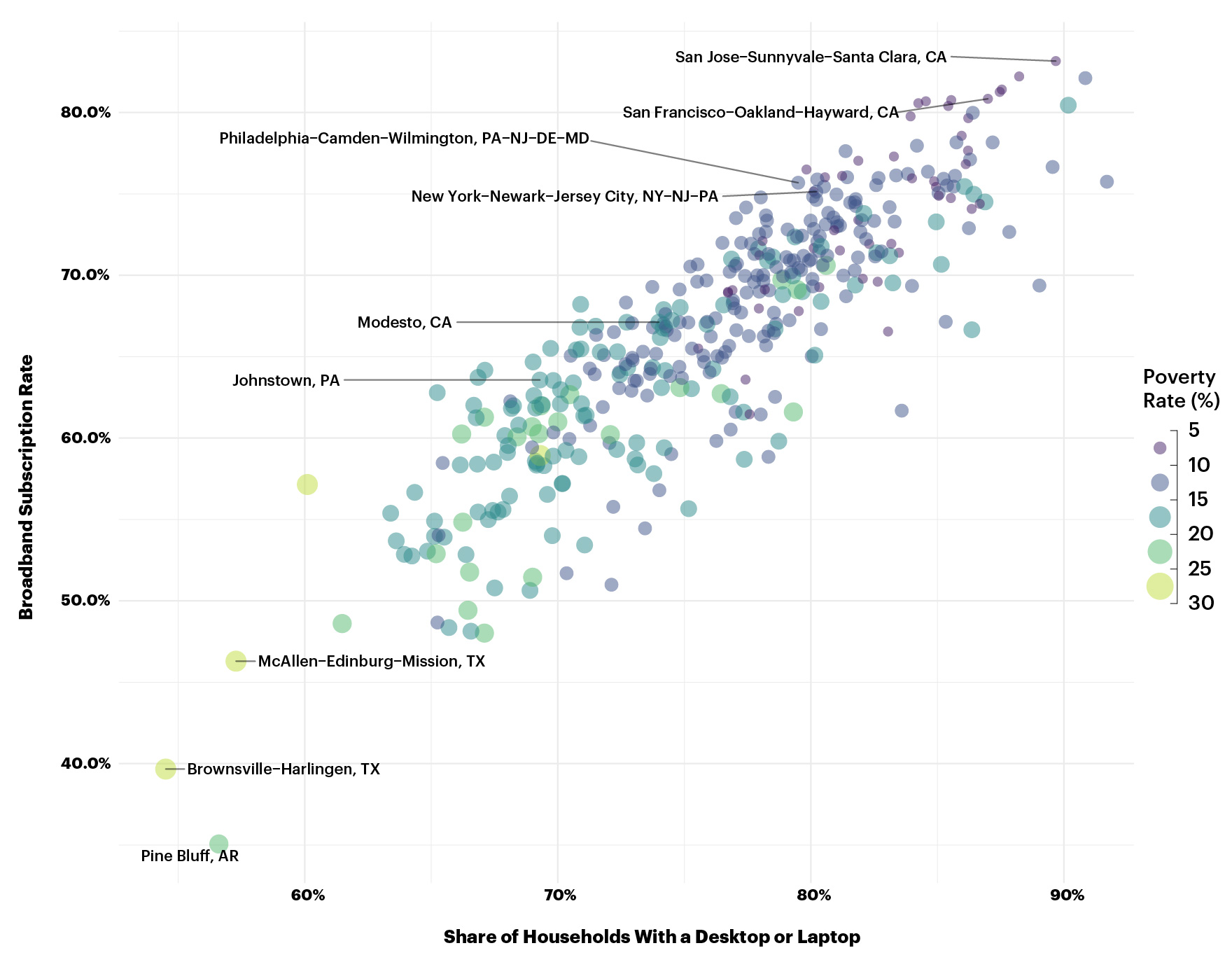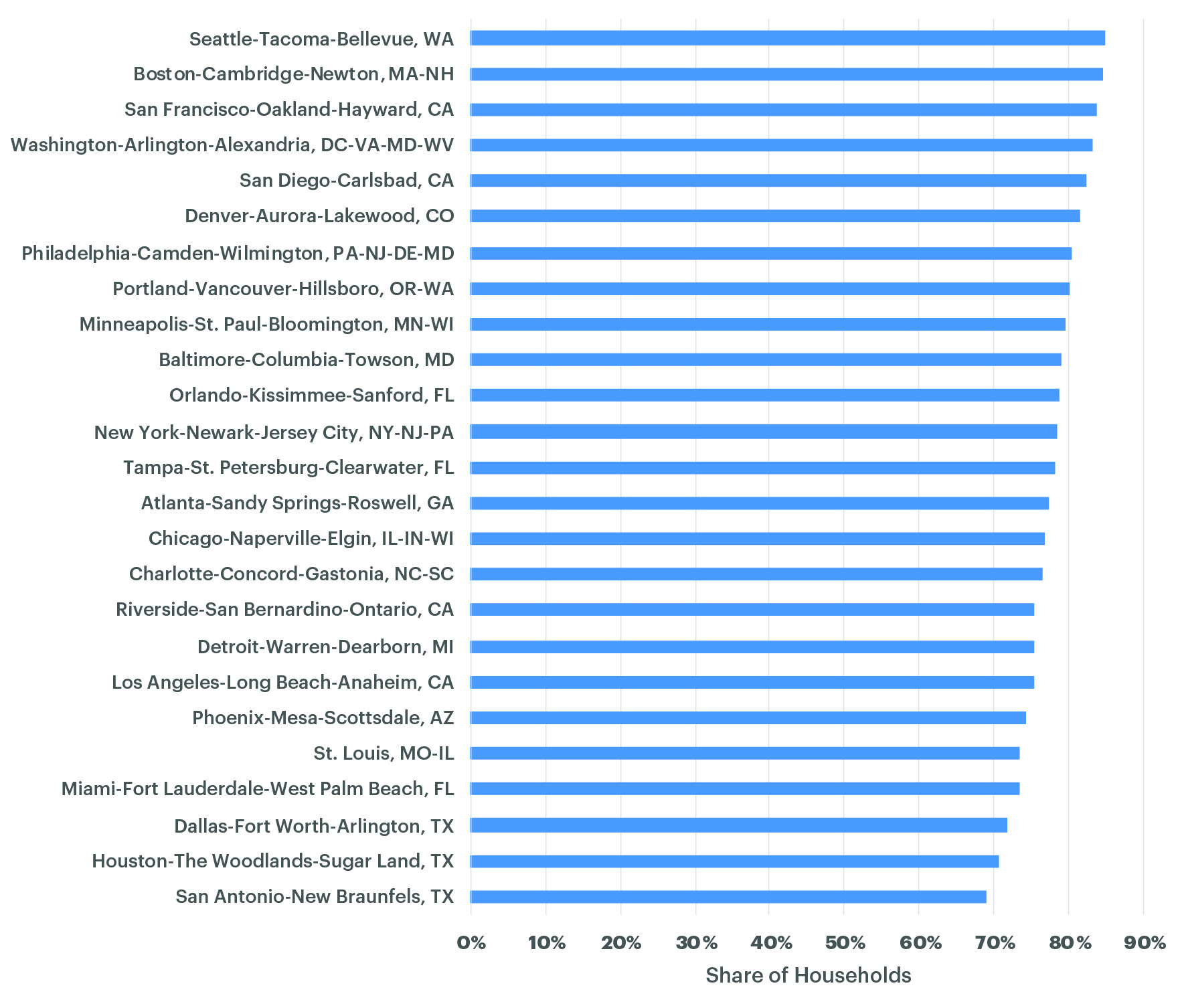I’m probably dating myself just by saying this, but back when I applied for my first job as a paperboy, I did it the standard way at the time — but that now seems positively Paleolithic. I walked right in and asked for a job.
In the four decades since I first dipped my toe into the labor force, the American workplace has changed. These days, many firms aren’t equipped to accept anything but online applications — even for jobs that don’t ever involve even touching a computer. That’s true here at the Fed, for instance, as well as everywhere from retail stores to restaurants to factories. The lesson is clear: In order to even apply for work in today’s America, you probably need access to the internet. And access to broadband internet, especially, as slow speeds can sometimes be as useless as having no connection at all. That’s why it is so encouraging that last week the U.S. Senate passed a bipartisan infrastructure bill that makes serious investments in broadband.
The search for insights
All this might go a long way to explaining the striking findings put out in a new report by my colleagues at the Federal Reserve Bank of Philadelphia, Alvaro Sánchez and Adam Scavette. Using the U.S. Census Bureau’s American Community Survey for a five-year period that ended just before the pandemic, these two scholars set out to determine how varying rates of broadband access affect the economic well-being of families and broader communities across the country.
Download the reportAlvaro and Adam’s central conclusions were twofold — one granular and one more macro. And they both hold important considerations for policymakers going forward as we chart an equitable workforce recovery from the COVID-19 pandemic.
At the individual and family level, Alvaro and Adam found that “prime-age workers (people 25–54) with a broadband-enabled computer participate in the labor force at a much higher rate than prime-age workers without access.” And zooming up to 30,000 feet, across metro areas nationwide, “household broadband subscription rates and computer access shared a strong positive correlation with one another, while regional poverty rates had a moderately negative relationship with both broadband subscription rates and computer access,” they wrote.
All of which is to say, those with broadband-enabled computers are more likely to work or even be looking for work, and the more people in a given community who have broadband-enabled computers, the more prosperous, as a whole, that community is.
Alvaro and Adam show that this trend plays out across the country, where communities have widely disparate levels of broadband accessibility. Here’s a view of household broadband subscription, computer access and economic insecurity, according to U.S. Metropolitan Statistical Areas:

Source: ACS 5-Year Estimates (2015–2019), Tables S2801 and S1701. Notes: One dot represents a single metropolitan statistical area. All U.S. MSAs are represented in this figure. Broadband is defined as a fixed wireline connection via DSL, cable, or fiber optic to the home. (Image by Philadelphia Fed)
This, in turn, is correlated with strikingly divergent economic conditions. Here’s the share of households with a broadband-enabled computer according to the largest 25 Metropolitan Statistical Areas:

Source: Authors’ calculations using ACS Public Use Microdata Sample (PUMS) 5-Year Estimates (2015–2019). (Image by Philadelphia Fed)
Alvaro and Adam are rigorous, disciplined researchers and don’t venture a definitive theory as to why broadband access is so closely related to labor participation and general prosperity. But they do observe that “since nonparticipation in the labor force may make access to a broadband-enabled computer unaffordable, [and] lacking such access may make participation in the labor force more difficult,” the causality may run in two directions.
In any event, it seems clear to me that lacking broadband access inhibits Americans’ ability to, as I said earlier, even apply for jobs — and then later to work remotely or to pursue training or education to advance one’s career.
Alvaro and Adam’s data cover until 2019, but one can easily surmise that the pandemic made things more challenging in two ways. For one, the COVID-19 pandemic made broadband access more important than ever, as millions of Americans switched to remote work. And at the same time, COVID-19 also curtailed Americans’ ability to access broadband in the first place, as places that offer it like public libraries or coffee shops were shuttered for months at a time. In a vicious irony, that is, broadband became more crucial to have just as it was becoming harder to access.
Meanwhile, while the current labor market has many employers so hungry for workers they are back to hiring people off the streets, it’s highly unlikely that this situation will last once things return to a more normal environment.
Connectivity matters
To solve this problem, we need to know what’s causing it. So, the big question is: Why do so many Americans lack broadband access? Cost is certainly a factor; surveys indicate that high costs is number one when low-income families forgo a broadband subscription. And in a country as big as ours, large swaths of territory simply don’t have broadband capability. Here in the Third District — hardly the frontier — there are many places where even basic cell phone service is spotty.
That means that, to bridge the digital divide and to build a truly equitable workforce recovery, policymakers will need to focus on improving both the physical reach of digital networks but also where the capability exists: their accessibility. They should treat broadband access like the critical piece of infrastructure that it truly is and do what it takes to ensure that all Americans can participate fully in the economy, because the economy will not truly thrive unless all are included. The bipartisan infrastructure bill, which supports broadband expansion, is a major step forward.
Far too many of our fellow citizens have been left on the sidelines of this recovery when all it would take them to get out in the field is, quite literally, the click of a button.
Before you go...
Please consider supporting Technical.ly to keep our independent journalism strong. Unlike most business-focused media outlets, we don’t have a paywall. Instead, we count on your personal and organizational support.
Join our growing Slack community
Join 5,000 tech professionals and entrepreneurs in our community Slack today!





